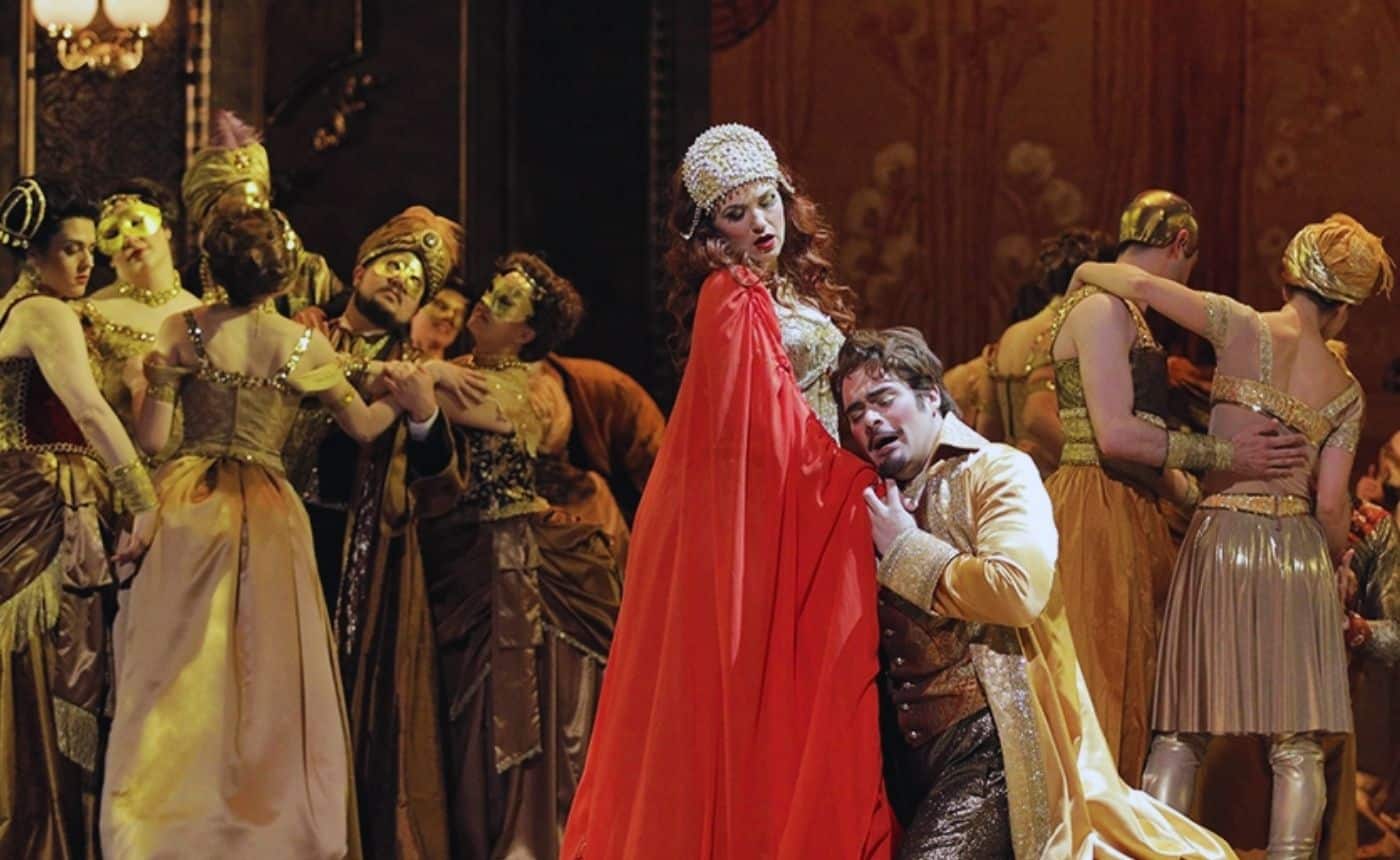Deadlier than the Male
…Deadlier than the Male
Ignore the statistics. Though Carmen‘s frequency of performance lags slightly behind a couple of others, such as Puccini’s La bohème, there is something about this opera that puts it ahead of all others in familiarity and fascination; it’s the opera we’ve all grown up with, the one whose melodies we’re most likely to hear in the schoolyard or as elevator music.
Most of all, there is Carmen herself. In 1875, when Bizet was composing Carmen, the phrase “Gypsy girl” alone was sufficient to conjure a whole world of wanton sensuality and danger, and this world was the focus of the Bizet’s source for his music drama: Prosper Mérimée’s novella Carmen, a first-person narrative set in Spain among the culture we now know as Romani and an early example of fatal attraction. We hear this in the opera’s explosive opening bars. Almost immediately after those smashing, cymbal-accented chords, we hear a second melody that takes Bizet’s drama beyond its source: Carmen’s “fate theme,” which evokes the fatal destiny that looms ever closer for her.
Bizet composed Carmen in 1875, when he was 37 and had a decent reputation as a composer, but was not classed as one of the most important in France; in fact, considering the high expectations of him in musical circles, his career so far had been something of a disappointment. He was one of the youngest pupils ever admitted to the famously rigorous Paris Conservatoire, and won its highest award for composition at age 19. Though his early operas did not hint at the boldness of inspiration in Carmen, they did reveal the freshness of his melodic inspiration. Just three years before Carmen, when Bizet composed the incidental music for the play L’Arlésienne, playwright Alphonse Daudet supposedly described his own play as “a glittering flop with the loveliest music in the world.” Tragically, Carmen would prove to be Bizet’s final masterpiece.
In Mérimée’s novella Carmen we learn more about Carmen’s doomed lover Don José than we see in the opera. He is depicted as an ordinary man who undergoes an extraordinary disintegration. This kind of story, representing female sexuality as a corrupting influence and southern peoples as dangerous, was common in pulp novels of Mérimée’s day; he wrote at a time when Gypsies were seen by most Europeans as filthy and dangerous. But it’s possible that his view of this subject was more complex, since he had visited Spain and had a relationship with a Gypsy girl who may well have been the model for his Carmen. Another source contemporaneous with Bizet was George Henry Borrow, a British writer and translator who explored Madrid, Granada, Seville and Cordoba.
In 1875, such characters were simply not seen on the operatic stage. Queen Victoria was still on the throne, and the moralists of her generation were in full cry. Nor were they alone in fighting a decency crusade; the Empress Eugénie had left a mark on Bizet’s France by imposing her rigid, Spanish-Catholic code on it. If such shocking material was to be introduced in opera, the Opéra-Comique was perhaps the last place where it might have been expected; this venue, after all, was where respectable bourgeoisie could expect reliably inoffensive entertainment. But change was in the air, and with it came Realism. Opera had already taken important steps toward Realism in the 1850s with Verdi’s La traviata, with its shockingly frank depiction of the elegant courtesan Violetta Valéry. But Bizet’s opera took such candor to a level for which the public was not yet prepared.
Controversy erupted over Carmen even before the first rehearsals began. By the time of its premiere at the Opéra-Comique in Paris on March 3, 1875, arguments over the scandalous plot were raging in cafés and in the theater itself. Bizet was also criticized for producing it at the Opéra-Comique, “A place where a man can take his wife and daughters.” The first performance of the opera brought condemnation in the press, but there were also dissenters — including the writer Blaze de Bury, who praised Bizet and said he had “no doubt about the composer’s future.”
The story of Carmen‘s supposedly calamitous first-season has been exaggerated in the retelling. The opera was performed 37 times at the Comique during its first run (though often to a half-empty house), and successfully revived during the next season. A real fiasco would have closed after just one performance or, in the worst possible scenario, the audience would have forced the curtain down in the middle of the show and made the impresario refund the ticket money, as sometimes happened in Paris.
When Bizet died, three months after the premiere of his wildly revolutionary opera, he knew it would survive. But could he have dreamed that it would become one of the most popular and influential works in the history of the theater, setting the parameters for a new structure and style in opera? Public and critical enthusiasm for Carmen only grows with time. Perhaps the first “daughter” of Carmen was Jules Massenet’s Manon (1884), with its amoral heroine; from there, the raw brutality of Italian verismo was already within reach. Today, Carmen‘s irresistibly passionate music and stark drama have transcended style and geography, and are embraced throughout the world.
©Michael Clive





